Image Archive







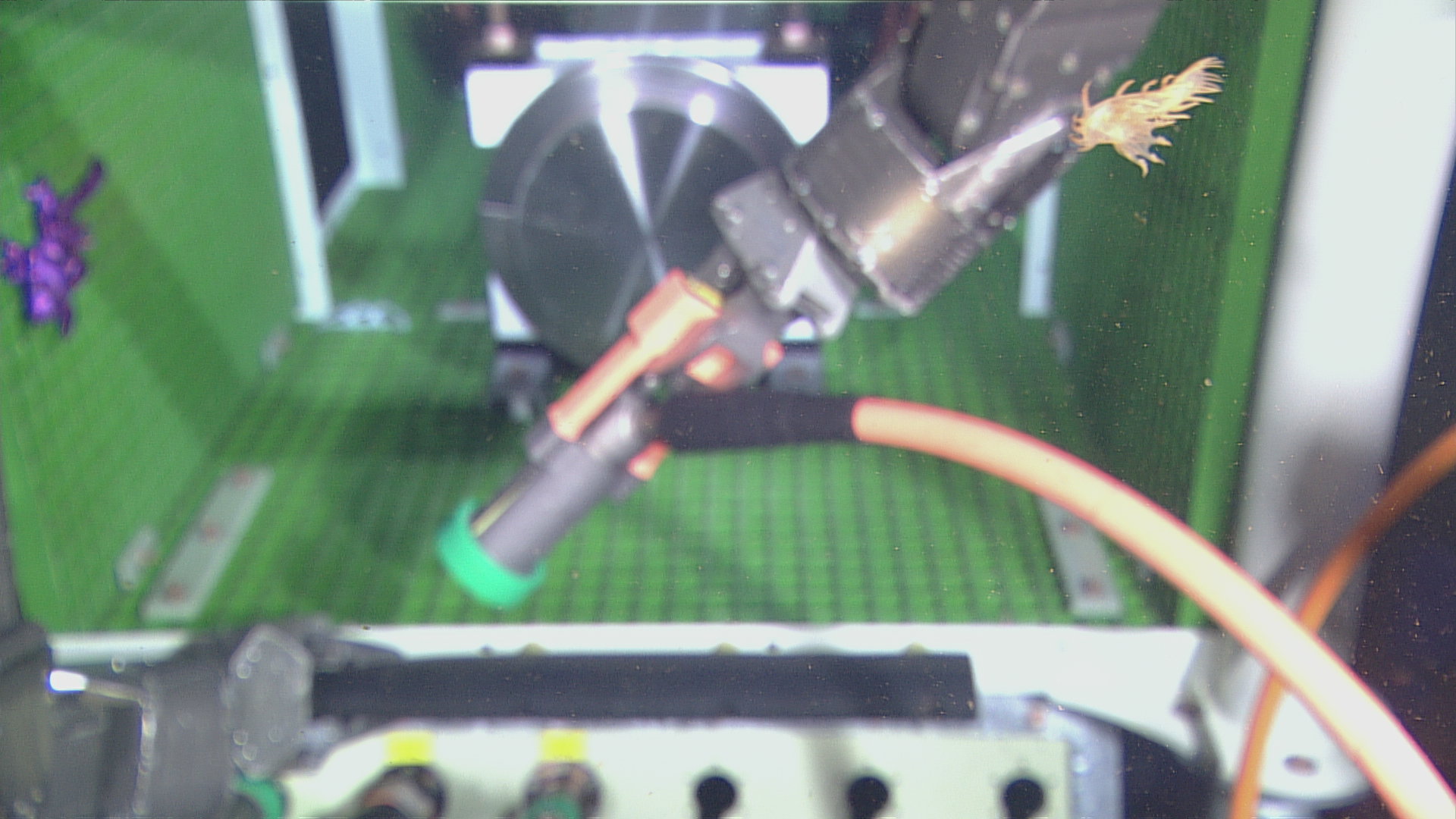

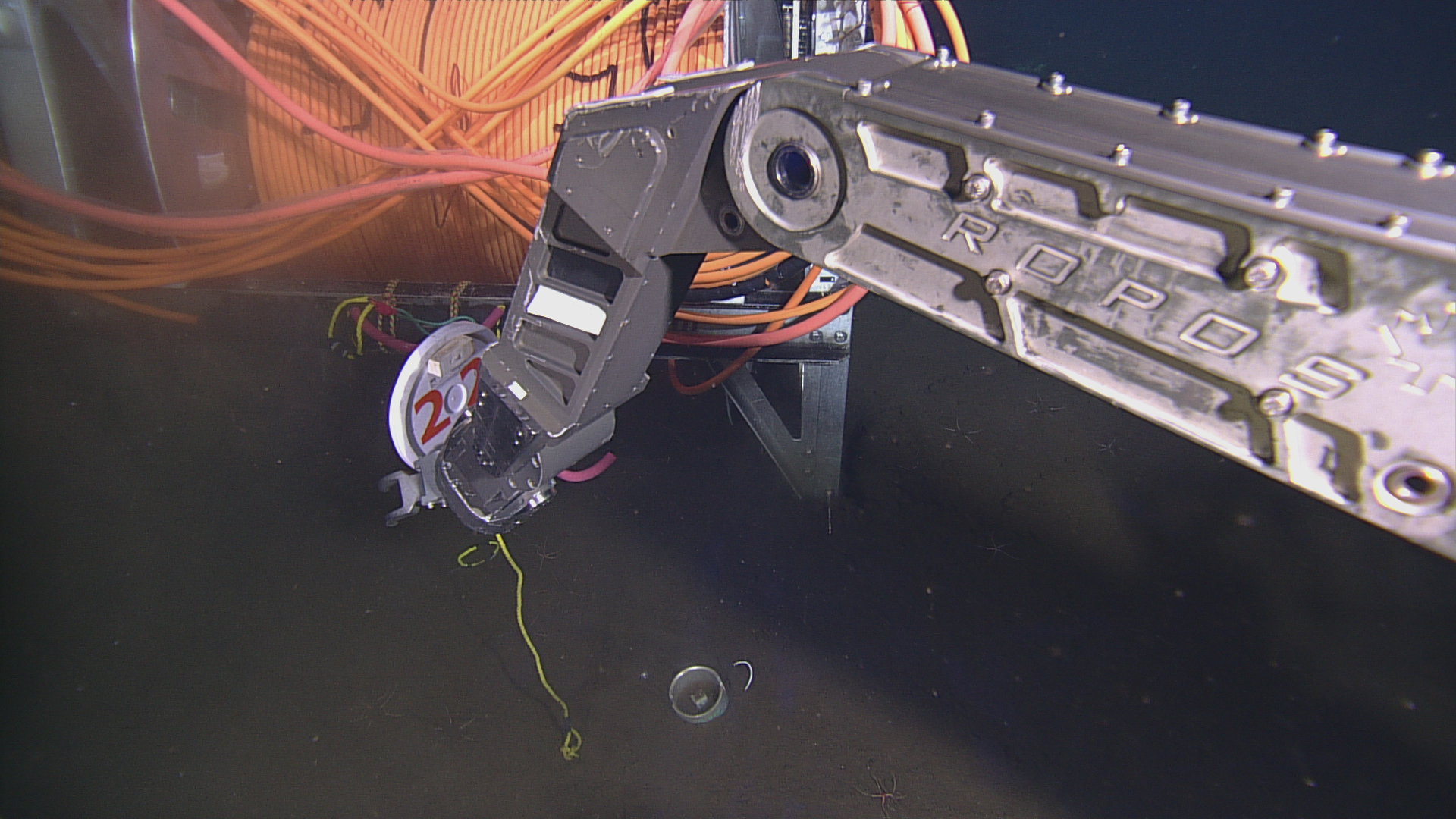
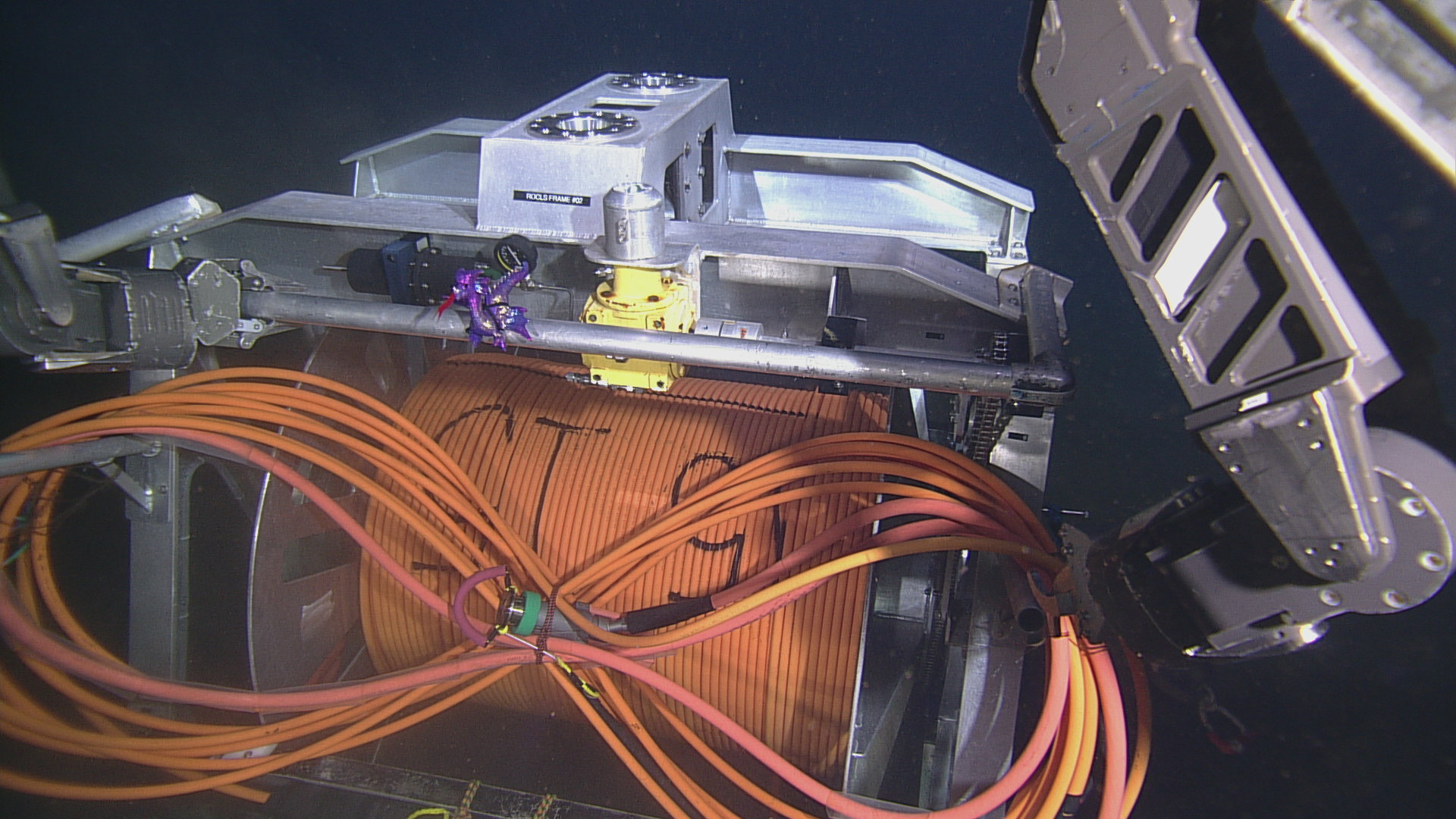










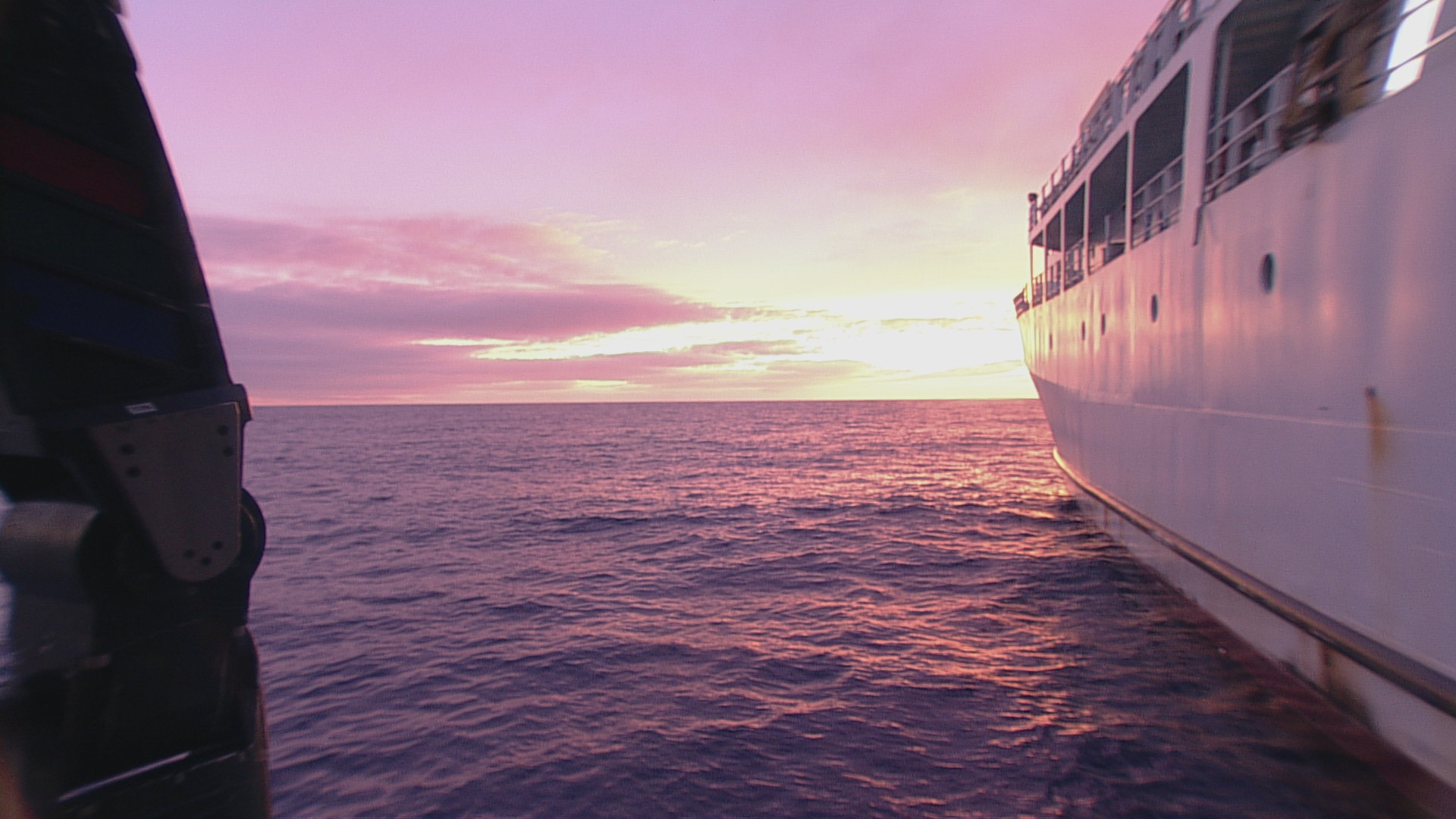


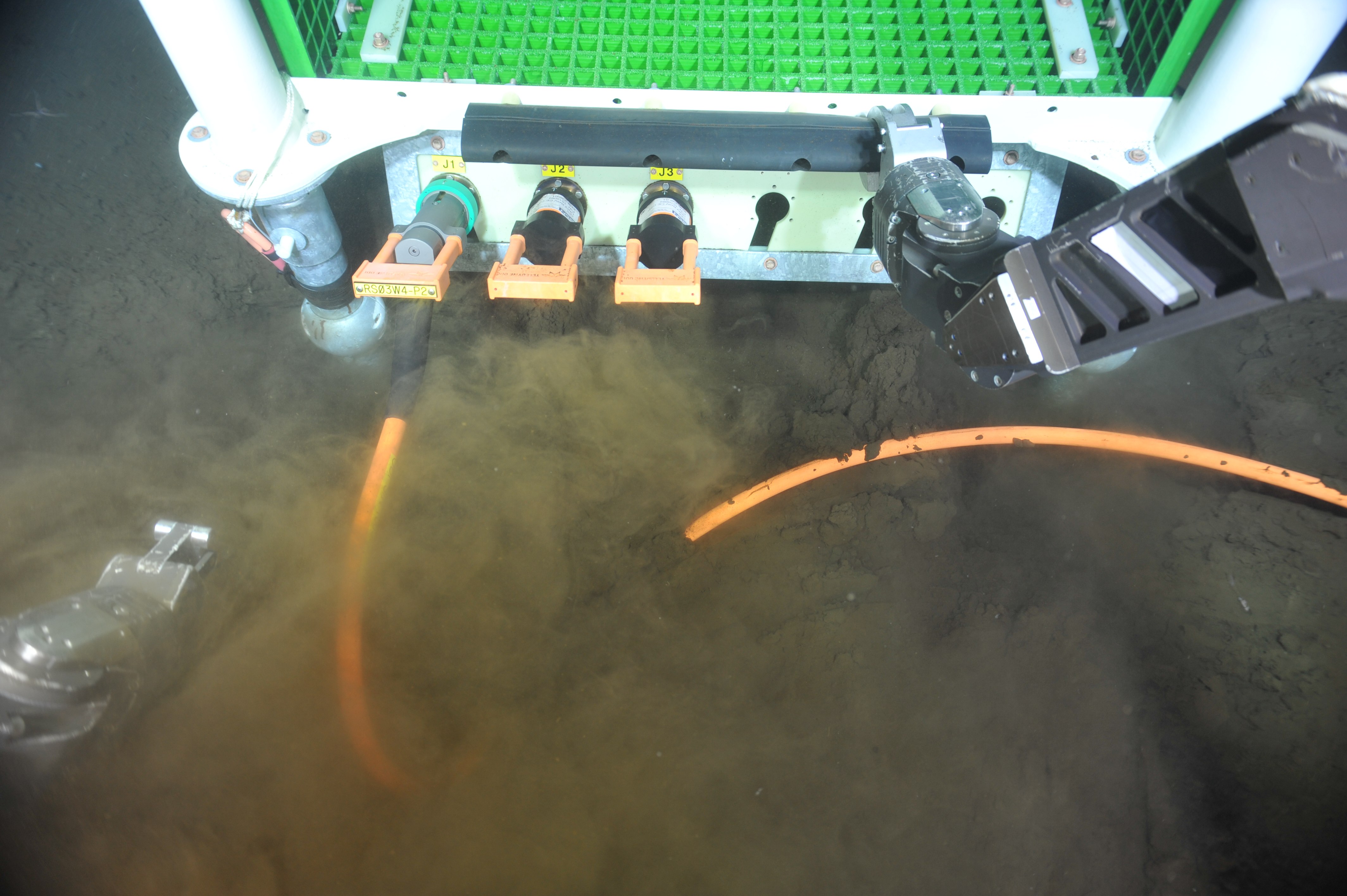




A large rattail swims beside LJ03A and LV03A at the Axial Base site (2600 meters deep). Photo Credit: NSF-OOI/UW/CSSF, Dive 1738, V14

A red siphonophore encountered during the descent to the Axial Base site, at 729 meters depth. Photo Credit: NSF-OOI/UW/CSSF, Dive 1738, V14

A skinny fish (either Bathylychnops exilis or a Paralepidid) seen during the ROPOS descent to the Axial Base site, at 565 meters. Photo Credit: NSF-OOI/UW/CSSF, Dive 1738, V14

A bunch of Peniagone taking flight during a ROCLS cable lay at the Axial Base site. Photo Credit: NSF-OOI/UW/CSSF, Dive 1737, V14

The empty ROCLS spool on the seafloor at Axial Base, after laying cable AXVMW4 from LV03A to the deep profiler site. Photo Credit: NSF-OOI/UW/CSSF, Dive 1737, V14

A Peniagone sea cucumber swam past ROPOS prior to laying AXVMW4 on the seafloor. Photo Credit: NSF-OOI/UW/CSSF, Dive 1737, V14

The P1 end of extension cable AXVMW4 plugged into LV03A at Axial Base. Photo Credit: NSF-OOI/UW/CSSF, Dive 1737, V14

A swimming sea cucumber floating by ROPOS as it prepares to plug AXVMW4 into LV03A at Axial Base. Photo Credit: NSF-OOI/UW/CSSF, Dive 1737, V14

ROPOS removing the protective cap from the P1 end of extensions cable AXVMW4, prior to plugging it into low-voltage node LV03A at Axial Base. Photo Credit: NSF-OOI/UW/CSSF, Dive 1737, V14

Removing Marker #22 from the seafloor at Axial Base, prior to laying cable AXVMW4. Photo Credit: NSF-OOI/UW/CSSF, Dive 1737, V14

ROPOS removing the bungee cords holding the slack cable of AXVMW4 onto the ROCLS sled. Photo Credit: NSF-OOI/UW/CSSF, Dive 1737, V14

A closeup view of a dinner plate jelly seen at Axial Base during dive 1737. Photo Credit: NSF-OOI/UW/CSSF, Dive 1737, V14

A large purple Benthodytes (?) cucumber seen at Axial Base site during a cable lay transect. Photo Credit: NSF-OOI/UW/CSSF, Dive 1736, V14

A large white sea star encountered during a cable laying survey at Axial Base. Photo Credit: NSF-OOI/UW/CSSF, Dive 1736, V14

A soft-bodied echinothuriid sea urchin (in upper right) encountered during the cable lay survey at Axial Base. Photo Credit: NSF-OOI/UW/CSSF, Dive 1736, V14

A burrowing anemone on the seafloor at the Axial Base site. Photo Credit: NSF-OOI/UW/CSSF, Dive 1736, V14

Junction box LJ03A cabled to the low-voltage node LV03A at the Axial Base site. Photo Credit: NSF-OOI/UW/CSSF, Dive 1736, V14

A closeup portrait of a big red jellyfish (Tiburonia granrojo) seen during the ascent from the Axial Base site, at 1064 meters. Photo Credit: NSF-OOI/UW/CSSF; Dive 1736; V14.

A close-up portrait of a black rattail fish at the Axial Base site, at 2603 meters depth. Photo Credit: NSF-OOI/UW/CSSF; Dive 1736; V14.

Several pom pom anemones have found a temporary home in a furrow in the seafloor near the Axial Base site. Photo Credit: NSF-OOI/UW/CSSF; Dive 1736; V14.

A dinner plate jellyfish observed at 1573 m during the descent of dive R1736 at the Axial Base site. Photo Credit: NSF-OOI/UW/CSSF; Dive 1736; V14.

A sunset on 4 August, captured by ROPOS immediately prior to dive R1736, to deploy LJ03A. Photo Credit: NSF-OOI/UW/CSSF; Dive 1736; V14.

On July 18, 2014 the Low-Voltage Node LV03A was deployed at Axial Base. It was moved on R1715 to its final location. It will provide power and communications to two moorings to be installed at this site. Primary Node PN3A is to the right. Photo credit: NSF-OOI/UW/CSSF; Dive R1714; V14.

Holothurians and brittle stars at the base of Axial Seamount. Photo credit: NSF-OOI/UW/CSSF; Dive R1717; V14.

The 1 km extension cable from the Primary Node PN3A at the base of Axial Seamount is connected to the low voltage node LV013A, which will feed the two moorings at this site. Photo credit: NSF-OOI/UW/CSSF; Dive R1717; V14.

A Big Red jellyfish (Tiburonia granrojo) swims past the high-definition camera on the remotely operated vehicle ROPOS. The water depth was 1547 m (5075 ft) beneath the ocean's surface. Credit: UW/NSF-OOI/CSSF; ROPOS Dive R1716; V14.

The ROCLS cable drum is unlatched on the seafloor at the base of Axial Seamount near PN3A at a depth of 2600 m. The cable, once plugged into a junction box and Primary Node, will power and communicate with ~2600 m-tall (8500 ft) instrumented moorings, as well as seafloor instruments. Photo Credit: NSF-OOI/UW/CSSF; Dive R1715; V14.

Scale worms on Escargot vent at Axial Seamount are typically pink. The one in the foreground dines on a clam. Credit; UW/NSF-OOI/CSSF; V10.
- Anemone
- Animal
- Arthropod
- ASHES
- Axial
- Axial Base
- Axial Biology
- Axial Caldera
- Bacteria
- Basalt Lava
- BEP
- Biofouling
- biolgoy
- Biology
- Camds
- Camera
- Camhd
- Central Caldera
- Ciliates
- Cnidaria
- Coastal Biology
- Crab
- Deep Profiler Mooring
- Dive Highlights
- Eastern Caldera
- Echinoderms
- Endurance Array
- Engineering Team
- ENLIGHTEN 10
- Exploratorium
- Fish
- Geology
- HD Camera
- HPIES
- Hydrate Ridge
- Hydrates
- Hydrophone
- Hydrothermal Vents
- Illustration
- Inshore 80 Meters
- Instrument
- International District
- J-BOX
- Jason
- Jellyfish
- Junction Box
- K12
- Lava
- Mollusk
- Moorings
- Nodes
- Nudibranch
- Octopus
- OOI
- Oregon Offshore
- Oregon Offshore 600 m
- Oregon Shelf
- Oregon Slope Base
- People
- PN1B
- PN1D
- Polychaetes
- PPSDN
- Primary Node
- RASFL
- ROCLS
- ROPOS
- ROPOS Dives
- ROV Team
- RV Revelle
- RV Sikuliaq
- RV Thompson
- Salp
- Sample
- SC13
- Science Team
- Sea Cucumber
- Sea Star
- Sea Urchin
- Seafloor
- Seismometer
- Sensors
- Shallow Profiler Mooring
- Shark
- Shipboard
- Shore Station
- Slope Base
- Smoker
- Soft Coral
- Southern Hydrate Ridge
- Sponge
- Squid
- Students
- Students & Guest Participants
- Tmpsf
- Tubeworms
- VISIONS 11 Leg 1
- VISIONS 11 Leg 2
- VISIONS 11 Viewers
- VISIONS 13
- VISIONS 14
- VISIONS 15
- VISIONS 16
- VISIONS 17
- VISIONS 18
- VISIONS 20
- VISIONS 22
- VISIONS 23
- Visualization
